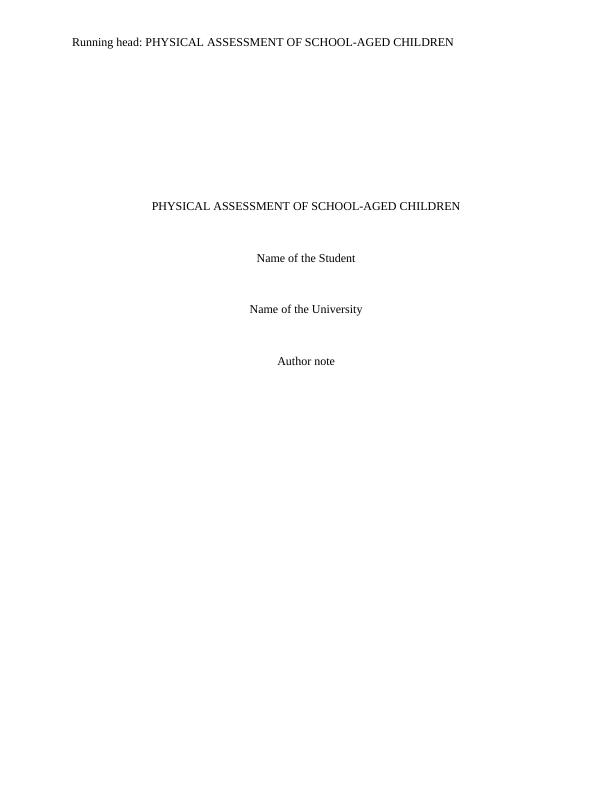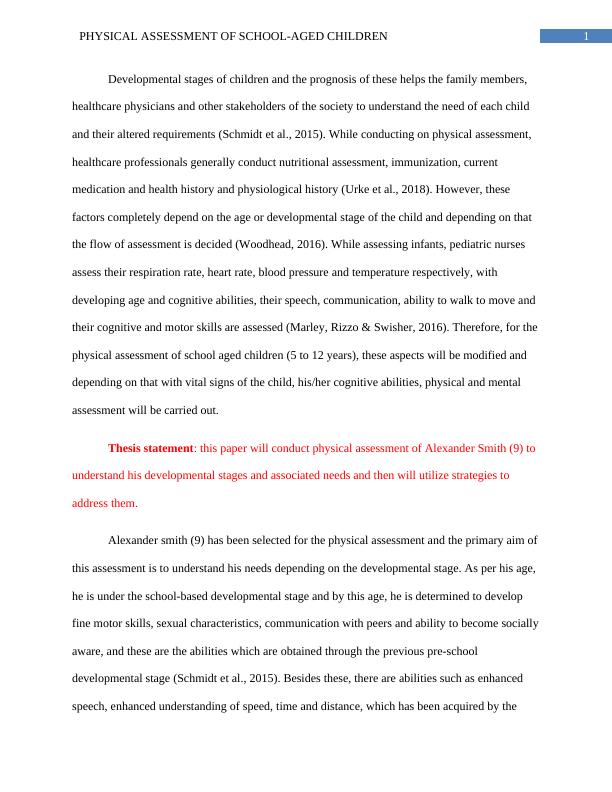Physical Assessment of School-Aged Children
Compare physical assessments among school-aged children, modify assessment techniques to match age and developmental stage, identify age and describe typical developmental stages, apply developmental theory, explain assessment process, gain cooperation, and potential findings
4 Pages983 Words128 Views
Added on 2023-04-22
About This Document
This paper conducts physical assessment of Alexander Smith (9) to understand his developmental stages and associated needs and then utilizes strategies to address them. The assessment includes cognitive and critical thinking of children and the assessment depends on their reflexes and replies to the physical assessment or cognitive assessment conducted.
Physical Assessment of School-Aged Children
Compare physical assessments among school-aged children, modify assessment techniques to match age and developmental stage, identify age and describe typical developmental stages, apply developmental theory, explain assessment process, gain cooperation, and potential findings
Added on 2023-04-22
ShareRelated Documents
End of preview
Want to access all the pages? Upload your documents or become a member.
School-Aged Child Development Case Study
|4
|796
|428
Psychosocial Stages of Development - PDF
|6
|1487
|49
Development Assessment of School-aged Children
|5
|1184
|76
Psychology Assignment 2022
|8
|1904
|42
Types of Assessments Among School-Aged Children
|5
|1110
|314
Child Psychology - Case Study Report
|8
|2205
|37


